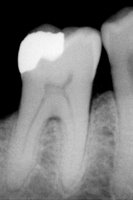MOVING BEYOND SIMPLICTY TOWARD THE RIGHT ANSWERS
Dr. Hebert’s article, Autism: A Brain Disorder, or a Disorder That Affects the Brain?(link to pdf here), does not break any new ground, but it does clarify where we are and, more importantly, where we should be going. In the piece, Dr. Herbert convincingly suggests that the scientific evidence now supports a departure from a “strongly genetic, brain-based” model of autism in favor of a “genetically influenced, systemic” model. Her model seeks exploration of the interplay between brain connectivity issues and biological factors. Somatic symptoms that some call “comorbidities” are hypothesized to “be integrally related to what have been considered ‘core’ or defining symptoms, and both are likely to derive from the same or related underlying pathophysiology.”
It is important to note that Dr. Herbert does not specifically identify mercury as the biological factor triggering the genetic predisposition. Rather, her article references “heterogeneous” biological underpinnings. That certainly matches my own opinion that autism is not dependent on thimerosal exposure, but thimerosal exposure may be a trigger or contribute to the development of autism. Autism, again in my opinion, predated the introduction of thimerosal into vaccines, but the expansion of the vaccine schedule and the use of thimerosal are the primary factors in the skyrocketing numbers of diagnosed autism. In other words, the fact that the development of autism in an individual does not mean it is not primarily responsible for the current epidemic (oh dear, there I go using the “E” word again).
For a while now, those of us who believe that vaccines played a role in our children’s autism have been split into three basic camps. (This is a gross overgeneralization given the various permutations on the hypotheses, but I am culling it to three to keep this post manageable.)
First is the group that believes thimerosal exposure to be the cause of autism, a view which is sometimes oversimplified into an equation of autism = mercury poisoning. Those who doubt the vaccine connection (i.e., those that proclaim autism is totally genetic and that the unprecedented increase in diagnosed cases is due wholly to broadened diagnostic criteria and increased awareness) tend to lump anyone who disagrees with them into either this category or into some vague classification of “anti-vaxers.” Although admittedly controversial and not universally accepted, laboratory testing often indicates that mercury may not be properly excreted by some autistic children.
The second group focuses more on the effects of MMR vaccinations and the development of enterocolitis. The connection is easy enough to make given the gastro-intestinal problems many autistic children have. Like the thimerosal hypothesis, there are laboratory findings ⎯ again controversial and not universally accepted ⎯ to suggest that live viruses are causing problems in these children.
The third group, which I would place myself in, sees validity in both the thimerosal and MMR hypotheses, but don’t believe either can give a full answer in isolation. The key to understanding is to classify autism ⎯ at least the form of autism we see in our children ⎯ as an autoimmune disorder. Although there is a genetic predisposition underlying everything, the actual autoimmune process in most children might start with mercury poisoning from thimerosal-laden shots (see the recent study from the M.I.N.D. Institute). With the immune system damaged by the mercury, it becomes understandable how attenuated live viruses, particularly those given in combination and simultaneously with thimerosal-containing vaccines (e.g., my son received the MMR, polio, and DTP shots all in one visit to the pediatrician) can not only fail to create an immunity, but might also cause the kind of biological damage of which Dr. Herbert writes.
As we learn more and more, this third hypothesis is getting more attention beyond the scientific community. Witness the new articles in Dan Olmsted’s excellent and thought-provoking “Age of Autism” series for UPI. Like all of his articles, Mr. Olmsted is very careful to avoid representing his writing as scientific, but the questions he raises cannot be ignored. His recent series entitled “Pox” (see here and here) examines some of the results of a Merck-sponsored trial of the “ProQuad” vaccine. The ProQuad combines the MMR with a vaccine for chicken pox. Some of the children on whom the vaccine has been tested, have developed autism. The common thread among the children, other than they all reside in the area of Olympia, Washington, where the trials occurred, is that they all have a family history in which relatives had problems with chicken pox (e.g., multiple cases of the disease or the subsequent development of shingles) that might suggest a susceptible immune system.
It may yet turn out that mercury is the only problem, or that the MMR is the only problem, or that vaccines are not involved at all and it is all genetics. It would be far easier to believe any of those scenarios than to look at a multiplicity of possible environmental triggers acting on genetic predisposition. Most of us, however, would rather reach the right answer. Dr. Herbert’s model provides a framework for finding the right answer. And an answer that points to autoimune processes makes sense.










